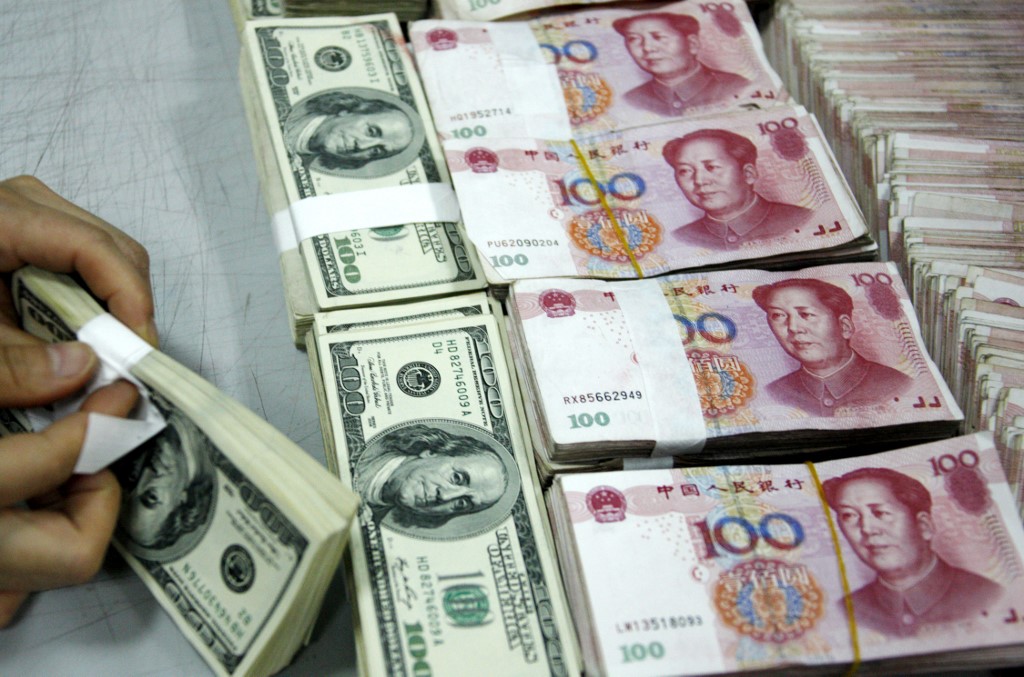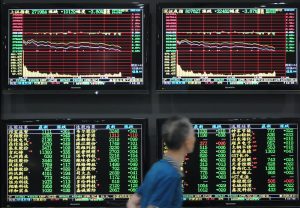(ATF) The Chinese currency just broke the psychological level of 7.00 versus the US dollar. This could be the start of a more meaningful rally in the Chinese yuan (CNY).
We have turned more positive on the Chinese yuan. The US dollar is showing signs of weakness, which is often the case when the global economy recovers and investor risk aversion moderates.
Currency investors look at yield differentials that have declined, making US dollar holding less attractive. Even in a world of low inflation, longer-term inflation expectations have started to creep up, eroding inflation-adjusted yield differentials as well.
The dollar has additional sources of weakness. The US is running a large budget deficit and US Treasury bond yields are very low and are increasingly negative when adjusted for expected inflation.
This can be observed in the real yield of US inflation-protected bonds (TIPS). For many years, there has been a gradual trend towards reserve diversification by global central banks. The euro and emerging market currencies have frequently been beneficiaries of such shifts.
This time, many emerging market currencies are buffeted by the twin shocks of increasing virus cases and a decline in global trade. The rise in virus cases in many emerging markets is accelerating and puts pressure on less well-resourced health systems.
As we have seen since March, widespread lockdowns are extremely costly to the economy. Even though recent data seems to indicate the many poorer countries have a lower fatality rate than those seen in parts of Europe and the US North East, rapid increases in infection risk overwhelming hospitals.
Uncertainty
Global trade was already harmed by the US-China trade war and resulting uncertainty but it took a major blow following the collapse in consumer and business purchases. The sudden stop in travel, lower commodity prices, and the plummeting of remittance payment just added to the misery impacting emerging markets.
In response to their weakening economic situation, central banks in most emerging market dramatically cut their policy rates and some have resorted to quantitative easing.
The euro will continue to be a beneficiary of a US dollar weakness. Europe is managing this crisis better than the 2008-09 Global Financial Crisis. However, for currency investors, negative rates are a bane and the ECB has made it abundantly clear that it will ease policy further through bond-buying operations.
Therefore, euro holders will continue to suffer from negative yields. While growth is already recovering from its April lows, the European economy will remain very weak for a long time. The most recent European Commission estimates of an 8.3% contraction in growth for 2020 can only be worrying.
Other major developed markets’ currencies have negative or very low rates. Even Australian bond yields are well below 1%.
In this low growth, low yield world, the Chinese currency stands out as an opportunity with the Chinese economy recovering amid a relatively successful virus containment result after its sharp Q1 lockdown. China is one of the few economies that is likely to grow in 2020, according to the World Bank [1]. Like everywhere, the government has increased spending and cut interest rates but despite a few lockdowns, Covid-19 infection rates and death have remained contained.
The risks to the bullish CNY view are the same as before. Tensions with the US remain a concern. However, as we get closer to the elections, we expect renewed US actions will be more posturing than harmful. The US administration will be more cautious not to jeopardise its own economy.
Another concern is that China deliberately keeps its currency weak to support its exports. This risk might be declining. The trade war and the Covid crisis has probably accelerated China’s move away from an export-driven economic model. A stronger currency becomes a positive factor for growth as consumption becomes a more important economic driver.
The US dollar usually gets stronger when investors become more risk-averse. This threat remains present and periodic shifts between euphoria and panic are bound to happen as markets grapple with the impact and consequences of Covid-19.
The CNY’s break of 7.00 vs. the US dollar is important and we expect further appreciation. The US dollar has its sources of potential weakness and the Chinese yuan has reasons to strengthen. Time is on investors’ side, the higher Chinese yields will also provide some additional return.
[1] Global Economic Perspectives, World Bank, June 2019 forecast a 1% growth rate for China in 2020.
Rajeev De Mello is managing director at Deep Learning investments. Prior to that, he was CIO at Bank of Singapore and head of fixed income at various global asset management companies.
























